From the September 2023 issue of Apollo. Preview and subscribe here.
In one episode of Absolutely Fabulous, Patsy finds herself at an editorial meeting for the glossy magazine of which she is – when she can remember the way to the office – style director. Ideas for the next issue are thrown around. ‘Chairs, I thought might be quite interesting,’ drawls one of her colleagues. ‘I’ve got a friend with a shop with some lovely chairs in it […] She believes chairs are as important to civilisation as a masterpiece… or something.’ What could be more vapid and superficial, jokes Ab Fab, than a whole feature dedicated to chairs? And yet, and yet. Émile Zola, for one, could write layers of meaning into a Louis XV cabriolet or a plump Braquenié-covered bergère. In his novel Nana (1880), he need only tell us that someone’s mother-in-law had died in ‘a square armchair with a stiff frame and inhospitable upholstery’ for us to understand that she was, at the very least, a tough old bird. While, by contrast, ‘the big chair with the red silk upholstery in which the Countess was now sitting down had just attracted his attention. Its style struck him as crude, not to say strangely suggestive, in this dull drawing-room. It was obviously not the Count who had introduced this voluptuous piece of furniture into the house. It gave the impression of being an experiment, of marking the birth of an appetite for enjoyment.’
The furniture we choose, the furnishings and objects we surround ourselves with, reveal volumes about who we are. And, in the case of a museum, who we have been. The Musée des Arts Décoratifs (MAD) in Paris holds a collection of some 1.4m (mainly French) items spanning furniture, glass, ceramics, toys, fashion, jewellery, painting, graphic arts and ephemera. These date from the Middle Ages to the present, with the 18th-century collections particularly strong. Here are masterpieces of cabinetmaking, silverware, porcelain, tapestry, gilding and papiers-peints, with the great maîtres of this apogee of French taste all present: Boulle, Aubusson, Sèvres, Gobelins, Meissonnier, Riesener, Jacob, Dufour. Presented for the most part in elegant mises-en-scène, the museum’s exhibits are occasionally put to more explicitly didactic use. A whole enfilade, for instance, is dedicated to the evolution of the chair in French design – with many individual seats, stools and thrones encountered elsewhere. One of the earliest examples is a late 16th-century oak caquetoire (from the verb ‘to chat’), whose seat widens towards the front to make room for the voluminous farthingales (or vertugadins) women wore at the time.
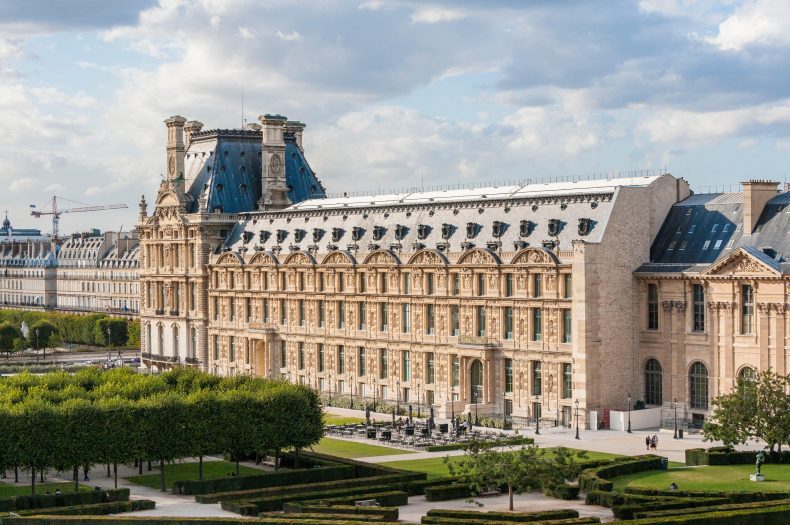
Since 1905, the Musée des Arts Décoratifs in Paris has occupied the Pavillon de Marsan in the Palais du Louvre. Photo: Hemis/Alamy Stock Photo
This sociological aspect is one that particularly interests Christine Macel, who took up directorship of the museum last October (her predecessor Olivier Gabet having moved to the Louvre to oversee its decorative arts department). The first exhibition she herself will curate at MAD, ‘Vie Privée, Modes d’Emploi’ is due to open in autumn 2024 and will examine the idea of intimacy through the centuries. ‘It’s about private and public, about what the object can tell you about changes in contemporary societies,’ she explains. ‘So instead of doing a show on, say, Ron Arad, or Futurism in design, what this museum can do is to offer up trends for people to examine, which can be fashion but also sociological trends. So one of my responses is to take a seam, in this case intimacy, and to show the change of the notion through the object.’
In both Macel’s conversation and in the museum’s press statement for a ‘new direction, new vision’, words such as ‘interdisciplinary’ and ‘transversal’ recur. Macel comes to the museum from the Pompidou, where she was chief curator for more than two decades. During that time she was artistic director of the Venice Biennale for 2017. Does her background in contemporary art inform her approach to older material, I wonder? While answering in the affirmative, Macel is keen to emphasise her less ‘contemporary’ beginnings: ‘I have always loved history and my beginning was in art history,’ she says, explaining that her first visit to the Louvre was at the age of six, ‘when there was no pyramid. I attended some courses for children, every two weeks in the collections, we studied each department. And then later I was at school at the École du Louvre. So I feel that somehow it’s natural for me to be here.’
We’re speaking on a hot July afternoon on the chic terrace of the museum’s restaurant, Loulou – all crisp white table linen and parasols. The view looks out west across the lawns and parterres of the Tuileries to the Eiffel Tower in the distance; and more immediately, to our left, the Place du Carrousel and I.M. Pei’s pyramid beyond that. Though separate as an institution, the Musée des Arts Décoratifs has since 1905 occupied the Palais du Louvre’s westernmost wing – known, since the 18th century, as the Pavillon de Marsan (it was where Madame de Marsan, governess to the future Louis XVI and his siblings, had her apartment). Remodelled several times since its original 1666 design by Louis Le Vau for Louis XIV, it was given its present appearance – after the ravages of the Paris Commune – by Hector Lefuel in the 1870s. The grandest space inside, the basilica-shaped ‘Nef’, is lit by a series of oculi in its ceiling and reserved for the museum’s bigger temporary exhibitions.
Not so long before Lefuel’s redesign, the catchily named Union Centrale des Beaux-Arts Appliqués à l’Industrie was formed – spurred (even antagonised) by the success of the first Universal Exhibition in London in 1851 and then by the founding of what would become the V&A a year later. Comprised of artists, artisans, collectors and businessmen, the group aimed to set up a ‘Louvre of industry’, one that would, in words anticipating William Morris, ‘nurture in France the culture of the arts which pursue the realisation of the beautiful in the useful’. For a while the Union set up home in an hôtel on the Place des Vosges. At its opening it displayed, as a journalist noted, ‘a very curious suite of oriental vases and jugs… guipures and Italian lace from M. Sajou; a very varied collection of earthenware from all manufactures and from all periods; and more Persian linens, Chinese and Japanese clothes, Venetian brocaded stuffs, Gobelin tapestries, etc etc. All these objects will be renewed every three months and will be replaced by others which will come to offer manufacturers and workers new subjects of study.’
Only in 1897, however, did the French state allocate the organisation – by now the Union Centrale des Arts Décoratifs – a suitable site for a permanent museum. In his capacity as official architect of the Louvre, Gaston Redon, younger brother of the Symbolist artist Odilon, gave the Pavillon de Marsan a museological makeover, while the Union was able to commission artists within its orbit to add final flourishes. The ferronnier Émile Robert, for instance, who had recently received the Grand Prix for his salle des métaux at the Exposition Universelle in 1900, forged a pair of ironwork gates for MAD’s entrance foyer; all spiky thistles and swirling acanthus leaves, it is an exemplar of both late art nouveau style and the high quality of craftsmanship the museum set out to celebrate.
When the museum opened these gates to the public in 1905, its holdings had just been swelled significantly by the generous bequest of one of the Union’s great supporters, Émile Peyre. A decorative architect and occasional antiques dealer, the Brussels-born Peyre had made enough money through elite projects to fill his house in the 16th arrondissement with the fruits of his collecting interests. These ranged from a 15th-century carved-oak settle with gothic tracery to paintings by Boilly and Hubert Robert. Half of the museum’s altarpieces came from his bequest (which numbered around 4,000 items), including the oldest Italian panel in any public collection in France.
Private collections make up the lion’s share of MAD’s holdings – something that, Macel says, is unusual in French museums, where there is ‘no strong tradition of donation’. The Marchesa Arconati Visconti (1840–1923; see September 2020 issue of Apollo) is another name that appears frequently throughout the galleries here. Intellectual, Dreyfusard and philanthropist, she left money and art to several institutions in France, including the Louvre, and at MAD her considerable bequests range from the large-scale – a ‘Renaissance’ room – to the small but perfectly formed: a Meissen coffee service, c. 1780–90, complete with silk-lined leather travel case, reflects the vogue for silhouette portraits, which here decorate each piece of porcelain where previously one might have seen monograms or coats of arms.
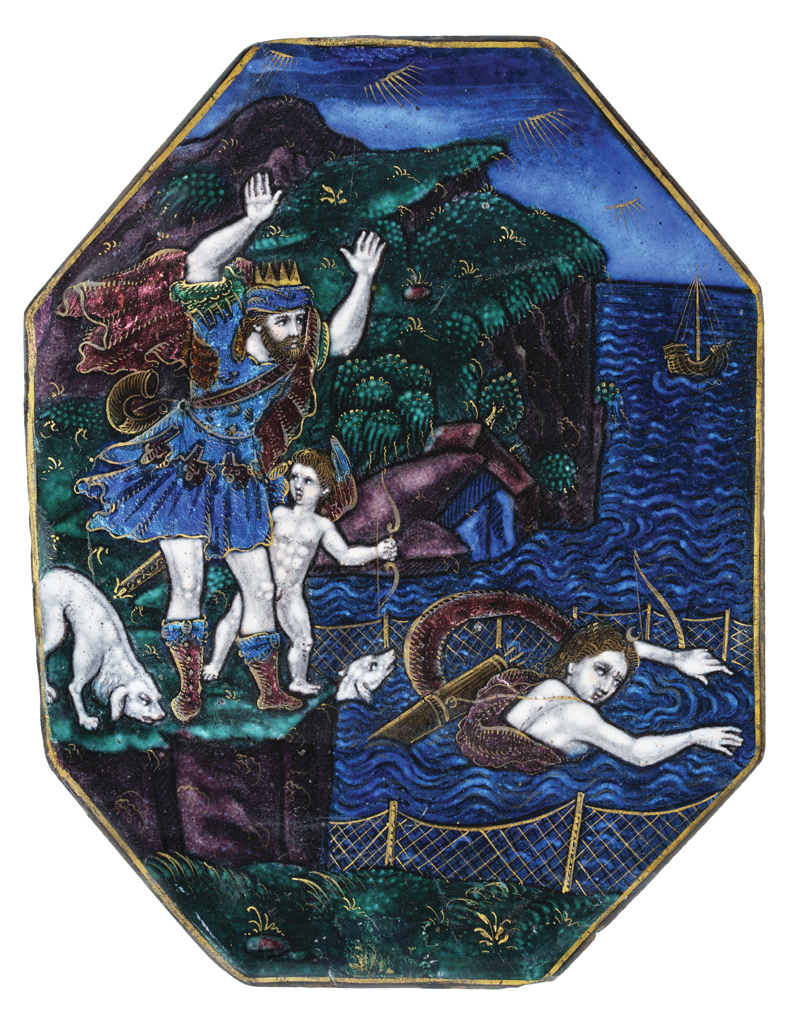
Britomartis and King Minos (early 17th century), Jean Limosin. Musée des Arts Décoratifs. Photo: Les Arts Décoratifs/Christophe Dellière
Less is known about Alexandrine Grandjean, another of the museum’s generous female benefactors. She was, we do know, the daughter of an antique dealer, and expanded her father’s collection after his death. On her own death in 1909 she left to the Union Centrale des Arts Décoratifs her mansion on the rue de Courcelles with all its contents. Dispersed now throughout the museum, they hint at the elegance of her rooms: 18th-century bronzes, marbles, Riesener cabinets. But it’s her collection of Limoges enamels that catches my eye as I pore over vitrines of 16th- and 17th-century items. Here are miniature plaques of biblical scenes in gold-flecked starry skies of midnight blue, whispering of portable, private devotion; or here the striking chiaroscuro of grisaille tassi, their Virgilian figures drawing on the classical engravings that were fashionable at the time.
Easily the most extraordinary bequest to the museum is not found within its walls, but north-west of here near the Parc Monceau. Moïse de Camondo’s father had bought a plot of land on the new rue de Monceau in the 1860s, around the same time the Union Centrale was formed. A family of Jewish bankers, the Camondos had made their fortune in Constantinople before moving to Paris. Moïse replaced the house his father had built with one modelled on the Petit Trianon, no less, and set about filling it with the best examples of 18th-century French taste his money could buy. He became vice-president of the Union Centrale des Arts Décoratifs. In 1933 he donated to the museum a group of 55 Boucheron tiepins, which had been given to his father by his lover the Comtesse de Lancy. (Some of these are on display in MAD’s two jewellery galleries.) A much more significant gift was to come. In the courtyard of 61 rue de Monceau, a plaque from 1936, a year after Moïse’s death, commemorates the handing over of his miniature palace, and all its contents, to the French state and MAD. It was to be named in memory of his son Nissim de Camondo, who had been killed in action in the First World War. Beneath this a smaller plaque has been added, stating that in 1943–44 his daughter, her husband and their children were deported to Auschwitz and murdered.
The Camondos counted the Rothschilds among their neighbours on the rue de Monceau, and Nathaniel de Rothschild is one of the other familiar names among MAD’s donors; as is Niki de Saint-Phalle. Jean Dubuffet, however, is a surprise: in 1967 the artist donated a substantial offering of his own work – paintings, sculptures and graphic works made after 1942 – which is now housed in a dedicated gallery on an upper floor of the museum. The gift came about as a result of the friendship between Dubuffet and François Mathey, MAD’s director at the time and a figure who, Macel suggests, made it ‘the key museum in Paris in the ’60s and ’70s. Beaubourg did not exist. This was the place where you had everything from tapestries to Calder to Dubuffet. He [Mathey] founded the Centre de Création Industrielle, which was then moved to the Pompidou.’
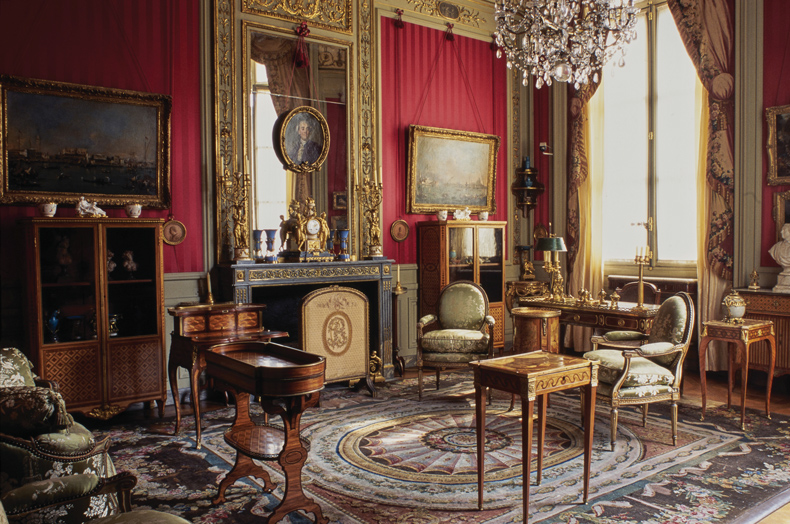
The Small Study or ‘Salon Anglais’ in the Musée Nissim de Camondo. Photo: Les Arts Décoratifs/Jean-Marie de Moral
So, a museum of decorative arts as forerunner to the Pompidou. Ideas around ‘fine’ versus ‘decorative’ art, and craft, is something that any director of this museum will have to wrestle with. In making the Union Centrale des Arts Décoratifs his sole legatee, Émile Peyre, for example, left the museum a significant cache of Italian paintings. Hence a gem like Bernardo Daddi’s Miracle of Saint Peter the Martyr (1338), which came from an altarpiece in Santa Maria Novella, Florence, and hangs here in the International Gothic room. Does it have a different status for being here, among architectural fragments and other altarpiece elements, than, say, the gold-ground paintings in the National Gallery in London?
To Macel, these hierarchies are ‘absurd’. ‘In France especially,’ Macel says, ‘we still have this order of values that was created in Italy and France between Academies – it’s really problematic, and I’m trying to rethink it.’ When she curated the Venice Biennale, Macel was eager to include the fibre artist Sheila Hicks. ‘Craft is now coming back in contemporary art, but I was reflecting on that at the time, not understanding why fibre or ceramic couldn’t be a material for an artist.’ The following year, in 2018, the 83-year-old Hicks had a solo show at the Pompidou, correcting the wrongs of decades past: ‘At the MAD she had been very close with François Mathey,’ Macel explains, ‘but she was excluded from the Pompidou; she was not considered an artist. Now I think we have changed something in the perception.’
Still, with a name as prescriptive as Musée des Arts Décoratifs, it’s difficult. Perhaps that’s why, a few years ago, the museum rebranded itself and its satellite institutions under the acronym ‘MAD’ – which can also stand for ‘Mode, Arts, Design’. The first of these is significant: its fashion collection, at some 120,000 pieces, is France’s most important, rivalling those of the V&A and the Costume Institute at the Met. (The restaurant we’re sitting in is named after Loulou de la Falaise, jewellery designer and Yves Saint Laurent collaborator.) The museum’s temporary fashion exhibitions are, arguably, what it’s best known for, at least internationally. The largest and most lavish of these to date was ‘Christian Dior, couturier du rêve’ in 2017, adapted by the V&A in 2019; last year came a tribute to Elsa Schiaparelli, which examined the designer’s connections to the Surrealists. Not having dedicated galleries for the fashion collection, Macel wants to make this element ‘more visible’ with a small number of pieces displayed throughout the permanent collection on a temporary basis.
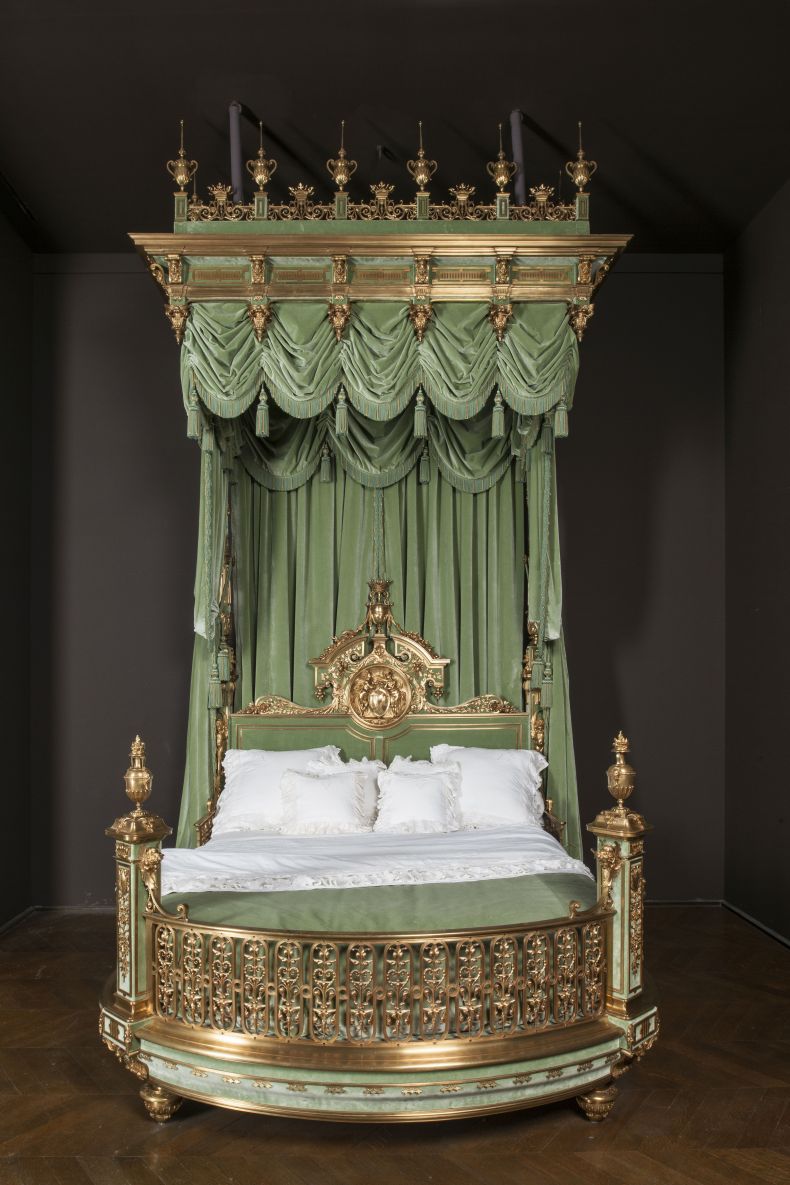
State bed of Valtesse de la Bigne (c. 1875), Édouard Lièvre. Musée des Arts Décoratifs. Photo: © Les Arts Décoratifs
Ultimately, of course, decorative objects belong in rooms. It’s what makes house museums – especially those as complete as the Nissim Camondo – so beguiling. The Musée des Arts Decoratifs has a particularly strong collection of ‘period rooms’. Many of them were acquired before the Union moved to the current site, when so many others, with their sought-after boiseries, were being shipped to America to put the gilt into the Gilded Age mansions of the Vanderbilts and Morgans. The best examples here are from the 18th century, whether their oak panelling is polished à la capucine (recalling the brown of a Franciscan’s habit) or painted, as in a delightful boudoir made in the 1750s for a tax collector’s mansion on the Place Vendôme and decorated with scenes from La Fontaine’s Fables. The exception to that, however, comes from the 1920s, in a suite of three rooms: the couturier Jeanne Lanvin’s bathroom, bedroom and boudoir from her hôtel particulier in the 7th arrondissement. As it happens Lanvin had bought the building (subsequently demolished in 1965) from the Marchesa Arconati-Visconti, and commissioned Armand-Albert Rateau, designer par excellence of art-deco luxe, to decorate it for her. The whole bedroom, including a modestly sized but achingly pretty lit d’alcove, is covered with silk dyed ‘Lanvin blue’, a colour the couturier is said to have taken from Fra Angelico. Embroidered white palms, rosettes and daisies (for her daughter Marguerite) appear lace-like round the lower register.
The best-known bed in the museum’s collection makes a somewhat different statement. It belonged to – and was donated by – Valtesse de la Bigne, one of the most successful courtesans in late 19th-century Paris. This extravaganza of a state bed (fittingly termed lit de parade in French), hung with teal silk and carved with cherubs, its canopy a sort of crown topped with gilded trophies, was made for ‘the lioness’ around 1875 by Édouard Lièvre. Zola, when he was researching Nana, was given a tour around Madame Valtesse’s house on the Boulevard Malesherbes, and was particularly struck by this bed. In the novel, the ever more monstrous Nana plans for herself ‘a dazzling marvel’ of a bed, ‘such as had never existed before, a throne, an altar, to which Paris would come in order to worship her sovereign nudity’. It wasn’t just chairs Zola could load with significance.
From the September 2023 issue of Apollo. Preview and subscribe here.
Unlimited access from just $16 every 3 months
Subscribe to get unlimited and exclusive access to the top art stories, interviews and exhibition reviews.

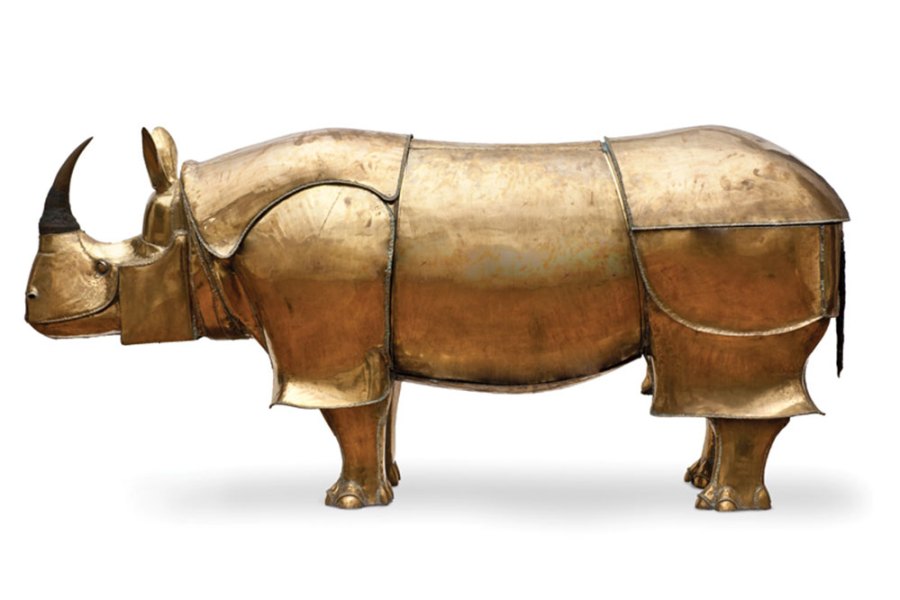
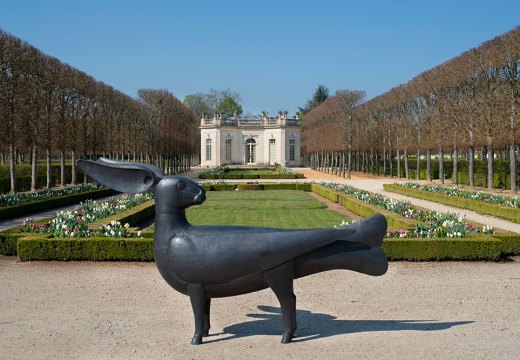
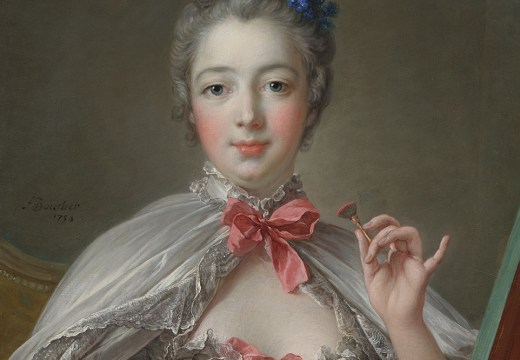
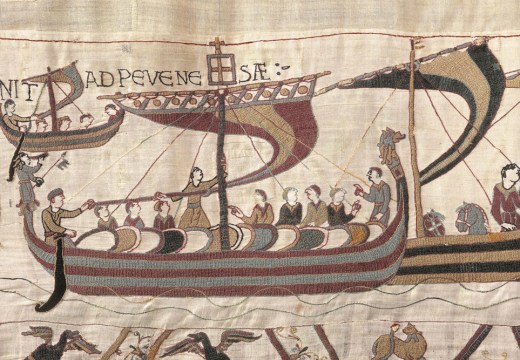









![Masterpiece [Re]discovery 2022. Photo: Ben Fisher Photography, courtesy of Masterpiece London](http://www.apollo-magazine.com/wp-content/uploads/2022/07/MPL2022_4263.jpg)
It’s time for the government of London to return to its rightful home